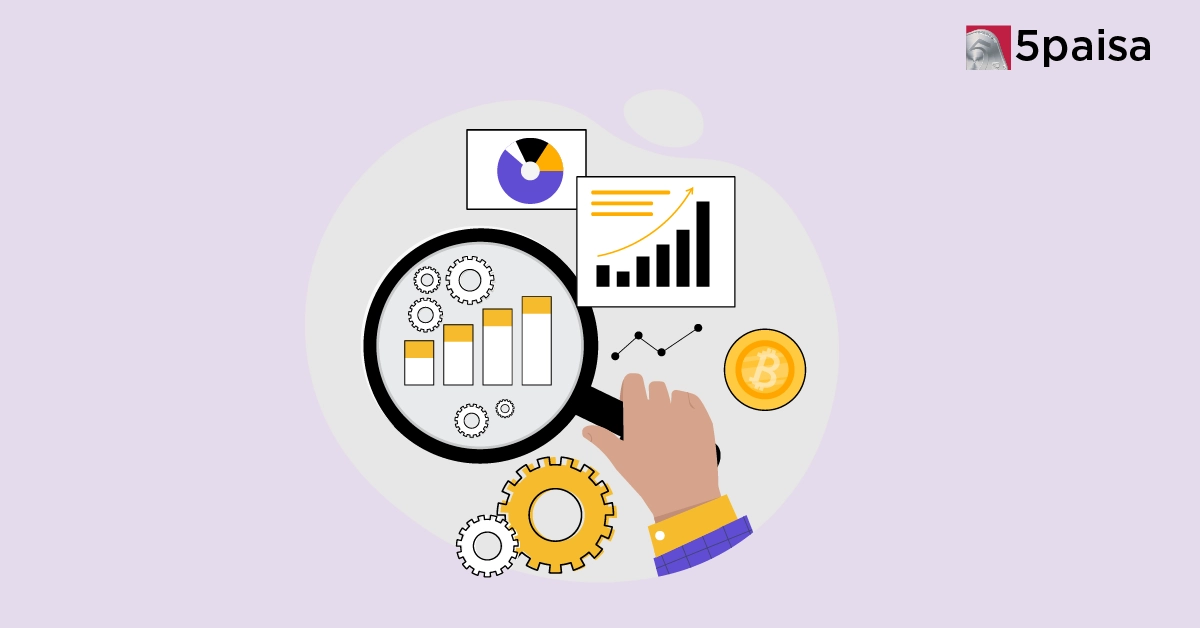Low PE, High Growth Stocks: Stocks Trading Below 15 PE with 20% Sales CAGR
ETF vs Stock Intraday Trading: Which Is Better in India?

Last Updated: 12th June 2025 - 11:33 am
In India’s evolving capital markets, the surge in retail trading activity has fueled a sharp rise in both intraday stock and ETF (Exchange Traded Fund) trading. While stock intraday trading has long dominated the scene, ETF intraday trading is now emerging as a compelling alternative for experienced traders. The debate—ETF intraday trading vs stock intraday trading—is not about which is easier, but rather, which is more efficient, risk-managed, and economically viable in today’s dynamic Indian market context.
This article dives deep into the advanced structural, regulatory, and risk-adjusted return factors differentiating both forms of intraday trading and evaluates which one edges out as a better choice for serious Indian traders.
1. Market Depth and Liquidity: Stocks Have Edge, ETFs Catching Up
Liquidity is a critical factor in intraday trading. Blue-chip stocks like Reliance, HDFC Bank, or Infosys trade in high volumes daily, providing tight bid-ask spreads and allowing for rapid order execution with minimal slippage.
By contrast, ETF liquidity in India is still evolving. While Equity ETFs like SBI Nifty 50 ETF, Nippon India ETF Bank BeES, and ICICI Prudential Nifty Next 50 ETF are gaining popularity, their average daily traded value still lags behind frontline stocks. However, liquidity in ETFs is also backed by Authorised Participants (APs) and market makers, ensuring sufficient creation/redemption flexibility. So, even if secondary market volume is thin, ETFs typically maintain tight spreads close to their NAV.
Analysis: For tick-by-tick scalping, stocks still offer superior liquidity. However, ETFs, especially Nifty or sectoral ones, are catching up fast and provide enough depth for high-value institutional intraday trades.
2. Volatility & Risk Management: ETFs Offer Natural Hedge
Volatility is both a friend and enemy in intraday trades. While stocks may provide outsized moves, they also expose traders to idiosyncratic risks—earnings surprises, management news, or regulatory shocks.
ETFs inherently diversify this risk. A Nifty 50 ETF holds 50 stocks—meaning even if one component underperforms, the aggregate movement is dampened. This built-in diversification makes ETFs less volatile, more mean-reverting, and ideal for range-bound or momentum strategies without the sudden tail risks seen in individual stocks.
For risk-managed strategies like VWAP-based mean reversion, delta hedging, or pair trading, ETFs offer a cleaner instrument with index-level beta exposure.
Analysis: ETFs are superior from a volatility-adjusted risk-return perspective, offering a stable asset for intraday setups without extreme drawdowns.
3. Cost Structure: ETFs Score with Lower Impact & Regulatory Leeway
Intraday trading cost includes:
Brokerage fees
STT (Securities Transaction Tax)
Stamp duty
Exchange transaction charges
Market impact cost
Stocks attract higher STT on both buy and sell, whereas for ETFs, STT is levied only on the sell leg (at 0.001%). Also, SEBI’s peak margin norms apply equally to stocks and ETFs, but ETF volatility (being lower) often means less margin spikes during trades.
Furthermore, some ETFs (like Bharat Bond or Liquid ETFs) are also exempt from stamp duty—offering hidden cost arbitrage to traders executing large-volume strategies.
Analysis: ETFs win hands down on the cost-efficiency front, especially for institutional desks and algo traders executing high-frequency or basket trades.
4. Strategy Variety and Flexibility: Stocks Are Still More Versatile
Stock intraday trading allows the implementation of a wider range of strategies:
Earnings momentum plays
Event-based arbitrage (mergers, buybacks)
Insider-based momentum
Volume breakout/supply-demand analysis
ETFs, being passive and index-linked, don’t react to micro events. They follow the macro trend and are ideal for:
Sector rotation trades (Nifty Bank vs Nifty IT ETFs)
Beta exposure hedge during volatile F&O expiry
Arbitrage strategies between ETF and index futures
Statistical arbitrage with NAV tracking error
Analysis: For discretionary or news-based traders, stocks offer higher alpha. For systematic traders, ETFs provide a clean, beta-driven canvas.
5. Regulatory & Tax Landscape: Same
SEBI regulations have made ETF transparency and compliance extremely robust. ETFs must disclose daily NAVs, portfolio holdings, and creation-redemption metrics, making them ideal for algorithmic strategies.
As per Income Tax act 112A LTCG exceeding ₹1.25 Lakh after 23 july 2024 will be charged at 12.5% as far as Equity ETF concern.
After 23 July 2024 the STCG tax is 20% in regards to Equity ETF.
Moreover, ETFs are not subject to circuit limits the same way as stocks are. A stock might hit a 5% upper/lower circuit, halting intraday activity. ETFs, being index-based, rarely face such extreme halts.
Analysis: For hedge funds, quant traders, and proprietary desks looking for regulatory clarity, transparency, and tax alignment, ETFs offer smoother compliance compared to the volatility and regulatory grey zones around microcap stocks.
6. Market Maker Support & Institutional Demand: ETFs Scaling Up Fast
Large institutional investors in India are increasingly using ETFs for intraday liquidity management. Market makers in ETFs are now regulated entities maintaining NAV-linked pricing. Hence, unlike stocks, where price movement is entirely sentiment-driven, ETF price discovery remains closer to underlying NAV.
Also, cash-futures arbitrage and option hedge strategies are now being executed using ETFs due to their alignment with Nifty/BSE indices.
Analysis: ETFs are rapidly becoming the preferred vehicle for low-tracking-error intraday positions among institutions and HNIs.
Final Verdict: Which Is Better?
| Criteria | Stock Intraday | ETF Intraday | Winner |
| Liquidity | High (Blue Chips) | Improving but lower | Stocks |
| Volatility (Risk) | High | Moderate | ETFs |
| Cost Efficiency | Higher STT + impact | Lower STT + market makers | ETFs |
| Strategy Flexibility | Wide strategy pool | Passive/index-based only | Stocks |
| Tax/Compliance | Simple but volatile | Transparent + NAV-based | ETFs |
| Institutional Adoption | High | Rising fast | ETFs |
Conclusion: Choose Based on Your Profile
If you’re a discretionary trader chasing alpha from events, earnings, or patterns in individual stocks, then stock intraday trading offers greater opportunities but with higher risk and volatility.
But if you are a systematic trader, arbitrageur, or someone seeking capital efficiency with lower slippage and cost, then ETF intraday trading offers a powerful alternative in India’s maturing capital market ecosystem.
In the coming years, as market makers and ETF liquidity evolve further, ETF intraday trading could become the default instrument for risk-conscious, strategy-driven traders. For now, a blended strategy using both—based on the day's opportunity matrix—might be the most prudent approach.
- Flat ₹20 Brokerage
- Next-gen Trading
- Advanced Charting
- Actionable Ideas
Trending on 5paisa
Indian Stock Market Related Articles
Disclaimer: Investment in securities market are subject to market risks, read all the related documents carefully before investing. For detailed disclaimer please Click here.

 5paisa Capital Ltd
5paisa Capital Ltd
 5paisa Capital Ltd
5paisa Capital Ltd



